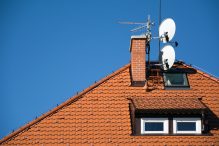3G & 4G Wireless: 10 Ways to Get Better Broadband in Your Rural Home and Business – Part 2
 If you’re struggling with poor mobile broadband, try working through this list of 10 ways to get the better wireless signal in your home. We ordered our 10 tried and true techniques from most estimated effectiveness to least estimated effectiveness for the average rural household.
If you’re struggling with poor mobile broadband, try working through this list of 10 ways to get the better wireless signal in your home. We ordered our 10 tried and true techniques from most estimated effectiveness to least estimated effectiveness for the average rural household.
In the first installment of better Wi-Fi(Broadband) series, we demoed switching the channel of your router transmits radio waves over to avoid interference from nearby neighbors on the same channel. Changing the transmission channel is, however, just one way to improve the wireless broadband signal in your home.
How to improve service in an area with poor mobile broadband coverage:
- Install an external, directional antenna.
A powerful external antenna is, by far, the most effective way to improve service in an area with poor mobile broadband coverage. Choose a directional antenna, like a Yagi, which concentrates transmissions in one direction and, therefore, gets better range. However, if you are located in a mountainous or forested area, you should consider an Omni-point antenna.
- Replace old or damaged routers, modems, cords, and connectors.
 The quality and age of hardware have a huge effect on data throughput and packet loss. Since rural coverage is already dodgy, users can’t afford cheap antennas, routers, modems, cords, or connectors. Furthermore, just consider Moore’s Law – the idea that the capabilities of electronics double every two years – means that internet hardware over two years old is significantly less efficient than newer hardware.
The quality and age of hardware have a huge effect on data throughput and packet loss. Since rural coverage is already dodgy, users can’t afford cheap antennas, routers, modems, cords, or connectors. Furthermore, just consider Moore’s Law – the idea that the capabilities of electronics double every two years – means that internet hardware over two years old is significantly less efficient than newer hardware.
- Clear the line of sight between your external antenna and the closest cellular tower.
Do you own a chainsaw? Well, this might just be the right place to use it. Please make sure to get the required training before engaging the saw. Vegetation causes interference between your antenna and the cell tower it transmits with. Clearing trees and brush that are in the direct line of sight between these two will prevent data packets from getting caught in the branches. Well, they will just literally drop.
- Elevate your external antenna.
An elevated external antenna not only transmits more directly with cell towers (which are typically built on a high elevation), but also transmits over vegetation, nearby buildings, and geological features that would typically cause interference.
- Reposition your external antenna.
Use a cell phone in test mode to perfectly position your antenna to achieve the maximum dB of signal gain. Test the antenna at every 10-degree increment horizontally and, if the nearest cell tower is at a higher elevation, test directing the antenna slightly upwards.
- Install an internal booster antenna.
Multi-directional booster antennas improve the range and efficiency of the Wi-Fi broadcast inside your residence. If you have access to 4G LTE where you live a MIMO – multiple inputs, multiple outputs – booster antenna will increase the potential throughput of your network exponentially at least 2-3 times.
- Move your wireless router to a central indoor location next to a window always.
The closer your device is to the router and window facing the location of the cell tower, the faster it will transmit online data. Don’t put your wireless router in the attic. Instead, install it in a window or in the room (office or living room) where you need reliable Wi-Fi the most.
- Switch other household electronics off.
Microwaves, cordless phones, baby monitors, VoIP, Bluetooth, medical equipment, satellite, closed-circuit television, and leaky electrical wiring emit same 2.4 GHz radio waves as Wi-Fi. If the band is congested, switch these electronics off or go for 5.0 GHz alternatives.
- Pick your wireless router up off the floor.
Elevating your router will keep it away from building materials in the floor, like cement and metal, that block radio waves.
- Change the channel of your wireless router.
Last week’s blog post demoed this little trick to avoid interference from nearby neighbors. If you live in the middle of nowhere, more likely than not too many neighbors is not your issue. Change your channel as a precautionary measure to avoid the few neighbors you do have.
If you’re struggling with a poor mobile broadband connection, fixed wireless internet is a great option. To find 4G LTE Plans in your area, call us at (866) 439-6630 for a free coverage check.





